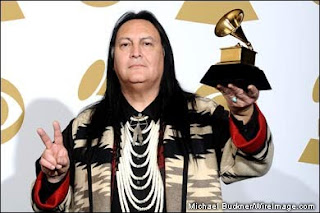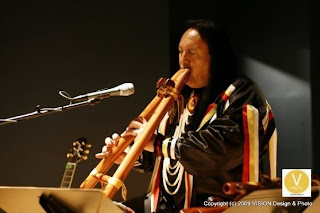 T
There's a good chance that you've already heard of Black Elk, the holy man of the Oglala Sioux. I don't think that I can introduce him better than Professor of Theology Dennis Hamm did writing for the
Center for the Study of Religion and Society in their Fall, 1993 issue:
Black Elk (1863-1950) may well be the most famous native North American. That he is even better known than Crazy Horse, Red Cloud and Sitting Bull is due mainly to the achievement of John Neihardt. The Nebraskan poet interviewed the Oglala holy man when the latter was 68. Out of those sessions he published, in 1932, the now classic Black Elk Speaks, which presents a stunning portrait of Black Elk as late 19th-century visionary and medicine man. Out of another set of interviews during the winter of 1947-48 (three years before the subject died), Joseph Epes Brown published The Sacred Pipe (1953), which gave the world further material from Black Elk's 19th-century medicine-man years. These two books are responsible for most people's picture of the man. Curiously missing from this portrait is the latter and longer part of his life-the fifty years lived in the 20th century, including his conversion to Christianity in 1904 and his long and productive career as a Catholic catechist.
That's right, for the last forty-five years of his life, Black Elk was a Christian.
In the preface to
Black Elk: Holy Man of the Oglala, Michael Steltenkamp reminds us of a 1970's television commercial in which an Indian (apparently a Sioux) sees litter and starts to weep. That romantic notion doesn't match one of Steltenkamp's experiences as a schoolteacher on the Pine Ridge Reservation. Steltenkamp was giving a ride to a friend of his who was a very traditional Indian. The young man didn't understand why Steltenkamp didn't want him to throw a soda bottle out of the car window.
 <--- author Michael Steltenkamp
<--- author Michael SteltenkampSteltenkamp's point in bringing up that incident (which I greatly shortened), is that we modern Americans have a lot of romantic (and false) notions about traditional Native American Indians. Neihardt's
Black Elk Speaks remains an important book, but it left us with some assumptions that are - fortunately for us - cleared up by Michael Steltenkamp.
Stay tuned for more on
Black Elk: Holy Man of the Oglala.







